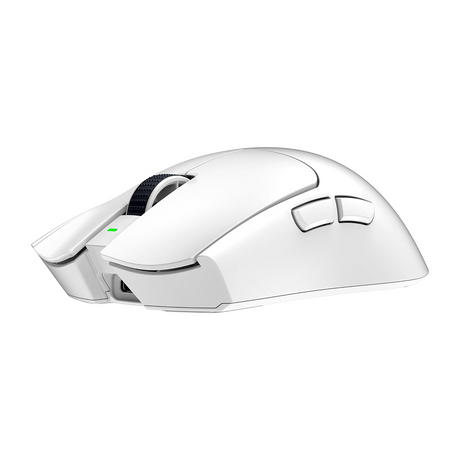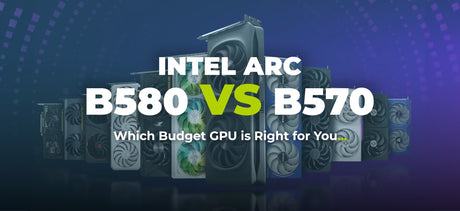When it comes to high-performance gaming peripherals, both Logitech and Razer dominate the market with innovative technology and refined designs. Two of their latest offerings the Logitech G Pro X Superlight 2 and the Razer Viper V3 Pro push the boundaries of what lightweight wireless gaming mice can deliver. In this comparison, we’ll dive into the specs, features, and distinctions between these two gaming powerhouses to help you decide which is best for your setup.
Design and Build Quality

Logitech G Pro X Superlight 2
The G Pro X Superlight 2 stays true to its name with a minimalistic design that prioritizes lightweight functionality. Weighing just 60 grams, it offers a symmetrical shape that feels great for a wide range of grip styles. While its exterior looks nearly identical to its predecessor, the internal upgrades like the HERO 2 sensor and optical switches aim to enhance its performance.
Razer Viper V3 Pro
Razer takes lightweight to the next level with the Viper V3 Pro, tipping the scales at an impressive 54 grams. Like the Logitech, the Viper V3 Pro features a symmetrical shape, but this time it caters specifically to right-handed users. Its build quality is exceptional, offering durability and a sleek, understated design with minimal branding. Razer has also introduced an updated Focus Pro 35K Optical Sensor, a key advancement over previous models.
Performance and Features

Logitech G Pro X Superlight 2
- Sensor: The HERO 2 sensor delivers reliable precision and tracks movement with maximum speeds of 888 IPS and accelerations up to 88Gs.
- Buttons: With 5 programmable buttons, the mouse offers solid customizability.
- Build and Connectivity: The switch to USB-C charging brings a modern touch, but beyond that, Logitech’s formula remains largely unchanged from the original Superlight. While still impressive, its lack of groundbreaking updates makes it feel slightly stagnated compared to competitors.
- Pros: Lightweight, durable, and ergonomic with an 8000Hz polling rate (with firmware update), making it ideal for competitive gaming.
Razer Viper V3 Pro
- Sensor: The Focus Pro 35K Optical Sensor is a game-changer, offering industry-leading precision with speeds of 750 IPS and accelerations of up to 70Gs. While the raw numbers may lag slightly behind Logitech’s HERO 2, the Focus Pro sensor feels snappier and better optimized in real-world use.
- Buttons: One extra programmable button (6 total) adds a bit more versatility.
- Build and Connectivity: The Viper V3 Pro debuts with out-of-the-box 8000Hz polling and supports Razer’s reliable HyperSpeed Wireless technology. Its lightweight design and exceptional click latency further cement it as a top-tier option for competitive players.
- Pros: Snappy sensor, ergonomic right-handed design, and a modern feature set make this mouse feel future-proof.
Aging Technology? Logitech vs. Razer
While Logitech remains a titan in the gaming industry, the G Pro X Superlight 2 reflects a pattern of incremental updates rather than bold innovation. By reusing its predecessor’s design and making only minor adjustments, Logitech risks falling behind competitors like Razer, who continue to introduce cutting-edge features. The G Pro X Superlight 2 remains a solid choice for loyal Logitech fans, but it doesn’t shake up the industry as its earlier models did.
In contrast, the Razer Viper V3 Pro feels fresh and forward-thinking. (In some ways it doesn’t even feel like a Razer product.) Its use of the Focus Pro 35K Optical Sensor and refined ergonomic shape positions it as a strong competitor in the gaming mouse arena. Razer’s commitment to constant improvement ensures that their products stay ahead of the curve.
Polling Rates: The 8000hz Debate
The polling rate of a mouse, measured in Hertz (Hz), indicates how often it reports its position to your computer. A higher polling rate, like 8000Hz, reduces input latency by updating the mouse's position every 0.125 milliseconds, which can theoretically enhance responsiveness.
However, many games and systems are not optimized for 8000Hz, leading to performance issues such as stuttering or lag. Additionally, higher polling rates place a heavier load on your CPU, which can impact overall system performance, especially on older hardware.
To maximize performance, we recommend using Windows 11, which has improved support for high-polling-rate mice, and fine-tuning your polling rate to suit your system. Start at 1000Hz and gradually increase to find the optimal setting for smooth and responsive gameplay.
Price and Value
- Logitech G Pro X Superlight 2: $299
- Razer Viper V3 Pro: $299
Both mice carry a premium price tag, but the Razer Viper V3 Pro offers slightly better value with its modern features and lightweight design.
Final Verdict
If you’re a Logitech fan looking for a familiar design with incremental improvements, the G Pro X Superlight 2 won’t disappoint. Its build quality, low latency, and lightweight design make it a reliable choice for competitive play. However, if you’re seeking cutting-edge technology, the Razer Viper V3 Pro takes the crown. Its innovative sensor, refined ergonomics, and forward-thinking features make it the better option for gamers looking to stay ahead of the curve.
Winner: Razer Viper V3 Pro

Ultimately, both mice are exceptional, and the choice will depend on your preferences. Logitech offers consistency and reliability, while Razer delivers bold innovation and better value.
Find Your Perfect Gaming Mouse: A Quick Guide
Looking for the ultimate gaming mouse to elevate your play? Key factors like ergonomics, size, weight, sensors, CPI, and speed all play a role in achieving peak performance and comfort. Whether you're a casual player or a competitive gamer, our How to Choose the Best Gaming Mouse blog breaks down everything you need to know to find your ideal match!
If you’re unsure which gaming mouse is right for you or need assistance fine-tuning your gaming setup, the friendly team at Computer Lounge is always here to help. Reach out to us via our contact page.


















